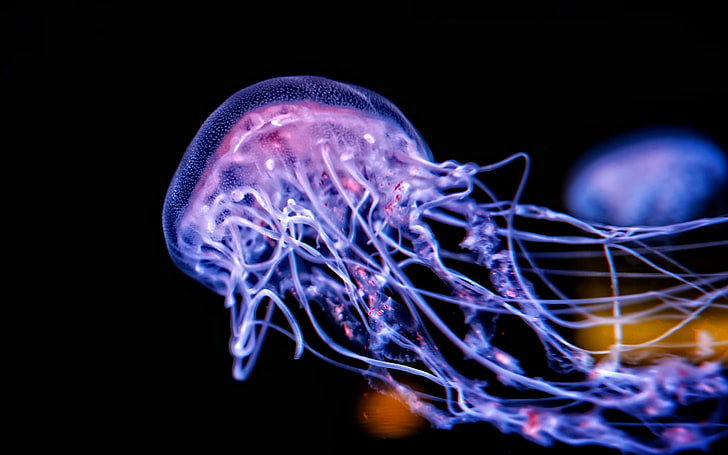
Barbeled dragonfishes (family Stomiidae) are another group of bioluminescent fishes, such as the species Photostomias guernei shown in the photo on the right, which has a bioluminescent organ next to its eye. This counter illumination lightens up the underside of the fish so it blends into the light coming from above, which helps to reduce a fish’s shadow. Plainfin midshipman ( Porichthys notatus), are sound producing, coastal fish that use photophores, or light producing cells, on their bellies as a way to camouflage themselves from predators waiting to ambush them from below ( Harper and Case 1999). One example are the anglerfish (order Lophiiformes), which have a modified fin ray with a bioluminescent organ at the tip that they dangle in front of their mouths like a fishing pole to attract prey ( Herring 2007). Bioluminescence can help attract mates, communicate, distract and evade predators, serve as camouflage, and help lure or illuminate prey ( Widder 1999). The ability to produce light in the dark and expansive depths of the ocean carries several advantages. Bioluminescence is not limited to fishes or the marine environment: this glowing phenomenon has been documented in algae, squid, terrestrial worms, and mushrooms. 1998) – but they can use blue or green light to communicate. Because red light is not visible at these depths, many fishes do not possess the receptors to see red ( Douglas et al. Short wavelength colors, such as greens and blues, are able to travel deeper into the water. As light enters the water, longer wavelength colors, such as reds, are absorbed first.

As you may have experienced, the deeper you descend into water, the darker your surroundings become, because less visible light can penetrate to these depths. Typically, the light emitted is blue or green in color because of the physical properties of light. Fish are able to produce light through chemical reactions or the excitation of bioluminescent bacteria living in their bodies. Befitting for Halloween, we wanted to share some fun facts about bioluminescent fish, the jack-o-lanterns of the sea.īioluminescence in fish is the ability to emit light from their body or organs. Here in California, the cold evening air is sending shivers down our spines, and turning our thoughts to the scaled creatures lurking in the deep, frigid waters of the Pacific Ocean. "The blue-green color to the eyes are pigments to help them find their bioluminescent prey.For those of you getting ready to enjoy the ghouls, goblins, and glow of jack-o-lanterns this evening, be prepared to get chilled to the bone. "Picture the blue-green body parts as upward facing eyes underneath a clear dome like an astronaut helmet," it said in a Facebook post. The glowing seen in the video is from the remote operated vehicle used in the dive shining on light colored tissue underneath a transparent dome, the Monterey Bay Aquarium said. The fish does not produce light like some other deep sea creatures. When it sees prey caught in the siphonophore tentacles, it rotates its eyes forward and swims up to get it. Siphonophores are unusual marine organisms that can grow up to 33 feet in length and drift around the ocean with thousands of stinging tentacles that are used to capture small animals.īarreleye fish are mostly motionless in the water, with its body horizontal and its eyes looking upwards. It is thought barreleye fish hover below siphonophores so they can steal their food.

They are found in oceans across the world, from the waters of Japan to Baja California. The species grows up to around six inches in length. "But how does this fish eat when its eyes point upward and its mouth points forward? MBARI researchers learned the barreleye can rotate its eyes beneath that dome of transparent tissue."īarreleye fish were first described in 1939.


 0 kommentar(er)
0 kommentar(er)
